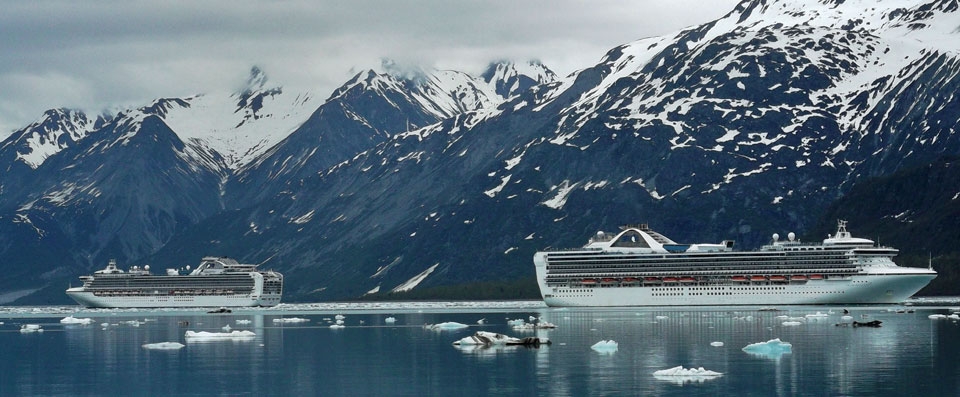STRESS-
On the Joy and Wonder of Connecting With Nature.
Spring is the perfect time to dwell on possibilities.
Reviewed by Abigail Fagan
KEY POINTS-
Nature can build resilience and strengthen cognitive functioning.
Connecting with nature only takes a small "dose" to have large effects.
Share outdoor time with non-human animals. Savor nature experiences for vitality, creativity, compassion, and joy.
"I dwell in Possibility." —Emily Dickinson
Spring is a time of liminality, that in-between time, when nature begins a process of re-awakening. Liminality is being “not quite” but almost. Our senses tune in, waiting for the emergence of newness, and suddenly we hear birds singing, see the bloom of flowers, and smell fresh, fragrant grass. Animal coats begin to shed, and metaphorically, our own layers do, too. Taking lessons from nature, the liminality of spring is the perfect time to dwell on possibilities.
Being outdoors is important given the increasing reliance on technology and screen time, with more and more individuals living sedentary lifestyles. The average American spends six hours and 59 minutes looking at a screen every day. That amounts to 305 feet of mobile content on a standard 6-inch smartphone — the height of the Statue of Liberty! (Feldman, 2022). Taking a break from technology is essential. Being in contact with microbes in the outdoors can “train your immune system" to fend off foreign cells and protect against illness or disease. Similarly, it can “train your brain" to mindfully attend to the beauty of the environment, which produces feelings of awe, gratitude, and wonder. Science has shown that these nuanced experiences of positive emotions enhance health and well-being (Tan, Wachsmuth, & Tugade, 2022).
Nature Fosters Resilience
Engaging with nature promotes resilience from stress. Resilience is characterized as the ability to “bounce back” from adversity (Block & Kremen, 1996; Tugade & Fredrickson, 2004). Spending time in nature advances recovery from stress, while increasing positive well-being, lowering mental distress, and minimizing the likelihood of using medication for depression (White et al., 2021). Nature-based retreats promote resilience through activities that develop skills to build self-esteem, competency, self-confidence, and self-efficacy. Natural environments also foster post-adversity growth by promoting self-reflection and feelings of purpose (Marselle et al, 2019).
Nature Sharpens Cognitive Skills
Exposure to natural surroundings helps to improve cognitive functioning across all age groups. For young children (4th to 7th grade), exposure to “green space” (trees, grass, plantings, vegetation) vs. urban space is associated with enhanced cognitive development over time (Dadvand et al., 2015). For middle-aged adults, being in nature improves executive control, cognitive flexibility, and attentional control (Stevenson, Schilhab, & Bentsen, 2018). And for older adults (aged 65 or older), being in nature may protect against the development of certain neurodegenerative disorders. In a large study of over 62 million Medicare beneficiaries, individuals living in green spaces (vs. urban spaces) showed lower rates of hospitalization for Alzheimer’s disease and related dementias and Parkinson’s disease (Klompmaker, et al. 2020). This could be due, in part, to more opportunities for exercise and social interaction. Simply, enjoying the outdoors can enhance cognitive focus and attention, which builds our cognitive capacities in valuable ways.
Doctors Give Nature Prescriptions: Get Your Healthy Dose
The World Health Organization (WHO) describes nature as “our greatest source of health and well-being” (WHO, 2020). Physicians and health professionals give nature prescriptions as part of their health promotion plans to address issues of chronic disease arising from sedentary lifestyles. There are 75 to 100 nature prescription programs across the United States, and many more worldwide, including Scotland, Canada, New Zealand, Finland, South Korea, China, and Japan (Kondo et al., 2020). These programs show that outdoor time improves anxiety, depression, and general mood — regardless of exercise type or intensity (Shanahan et al., 2019). Connecting with nature helps reduce salivary cortisol, heart rate, high-density lipoprotein cholesterol, diastolic blood pressure, and triglycerides (Twohig-Bennett and Jones, 2018).
Notwithstanding, accessibility to nature and open space may not be easy for everyone. Public health ordinances should prioritize making green spaces available and accessible to all.
4 Ways to Bring Nature Into Your Daily Life
1. Take an “Awe Walk”: Less Screen-time, More Green-time
Awe is felt in the presence of something vast that cannot be immediately understood (Keltner & Haidt, 2003). Even brief experiences of awe can produce generosity to others, increased personal well-being, and greater humility (Shiota et al., 2007). Awe produces physical and emotional benefits, including reductions in anxiety, depression, cortisol, inflammation, and cardiovascular risk (Anderson et al., 2018; Twohig-Bennett, 2018).
Nature may be an under-utilized public health resource for psychological well-being in a high-tech era. Research shows that young children are spending less time outdoors than their predecessors (Kemple et al., 2016). A meta-analysis of 186 studies found that time spent in parks positively affects psychological well-being and academic achievement for students (Oswold et al., 2020). For college students, taking a study break in nature can help alleviate academic stress. An experimental study found that students who walked in nature for 15 minutes had significantly lower cortisol levels and greater positive emotions, compared to students who watched nature indoors on their screens (Olafsdottir et al.2018).
Nature exposure can transform social relationships and strengthen community connections. Feelings of awe fortify social relationships by prioritizing the needs of the collective above an individual’s (Keltner & Haidt, 2003). Healthy older adults (ages 60 to 90 years) were instructed to take 15-minute outdoor walks each day for eight weeks. Participants who took awe walks (focusing on vastness and novelty) vs. control walks expressed greater feelings of social connection and being part of something larger in the world.
“Around me the trees stir in their leaves and call out, ‘Stay awhile.’” —Mary Oliver
2. Go "Forest Bathing": Mindful Attention in Nature
Forest bathing involves full absorption of the five senses as you engage in nature. Derived from the Japanese phrase, shinrin-yoku, meaning “taking in the forest atmosphere,” forest bathing has positive physiological effects, including blood pressure reduction, immune function improvements, depression alleviation, and mental health improvements. In one study, participants who took a three-day forest bathing retreat showed an increase in the number and activity of natural killer (NK) cells, which help fight virus infection. NK activity during forest bathing also attenuated the stress hormone response (adrenaline, noradrenaline). Relatedly, a study showed that taking nature walks at least once per week for three months can decrease reports of stress, depression, and negative affect, while showing improvements in positive affect and mental well-being (Marselle, Warber, & Irvine, 2019).
The “5-4-3-2-1” exercise is an easy way to center one’s attention while in nature. Name and identify: five things you can see (dew drops on leaves, stars in the sky); four things you can hear (the crunch of leaves, the whisper of the breeze); three things you can smell (scent of flowers, earthy aroma of tree bark); two things you can touch (blades of grass afoot, smooth river stones); one thing you can taste (fresh picked berries or herbs). Taking time to intentionally meander and marvel about nature can produce improvements in physical and psychological health.
3. Awaken the Wild: Share Outdoor Time with Animals
Spending time with animals shows respect and gratitude for all living beings, wild and tame. Interacting with animals can increase trust, self-confidence, empathy, and compassion, while reducing anxiety and fear. Petting and grooming them relieves stress by lowering blood pressure, heart rate, and cortisol levels (stress hormone). Additional benefits include increased oxytocin (social bonding) and dopamine (motivation, reward), which together play roles in regulating psychological distress (O'Haire, Guerin, & Kirkham, 2015).
Beyond influencing physiological changes to the brain, interactions with animals provide a broad range of emotional and social support that can buffer stress and loneliness, while improving the ability to adapt and recover from adverse circumstances.
The bonds we have with animals come in many forms, including companion animals, emotional support animals, and working animals. Animal-assisted therapy programs help individuals cope with stressors and adversity from trauma or addiction. Researchers recommend these animal-assisted therapies (often with dogs or horses) as complementary techniques alongside clinical treatments (O’Haire et al., 2015).
Animals nurture our hearts and minds in meaningful and profound ways that often go unnoticed, yet have long-lasting effects.
4. Do Less to Feel More: Savor Experiences of Nature
Savor the experience of nature with full absorption and intensification to unleash creativity, joy, and compassion (Edwards, 2019) towards greater well-being (Sato et al., 2017). Scientists have referred to the slowdown of human activity as an anthropause that reciprocally gives wildlife and humans time for renewal. This human stillness allows for "sharing space on this increasingly crowded planet, with benefits for both wildlife and humans." (Rutz et al., 2020)
The next time you go for a walk, remove your headphones, put your phone away, kick off your shoes, walk barefoot through the grass or sand, and listen deeply to the environment around you. Perhaps adopt the persona of a painter, and examine the world with new eyes. Or listen like a musician, hearing notes with new ears. Keep a nature diary, and look forward to the next chapter.
(Now the ears of my ears awake and/ now the eyes of my eyes are opened) —e.e. cummings
STRESS-
On the Joy and Wonder of Connecting With Nature.
Spring is the perfect time to dwell on possibilities.
Reviewed by Abigail Fagan
KEY POINTS-
Nature can build resilience and strengthen cognitive functioning.
Connecting with nature only takes a small "dose" to have large effects.
Share outdoor time with non-human animals. Savor nature experiences for vitality, creativity, compassion, and joy.
"I dwell in Possibility." —Emily Dickinson
Spring is a time of liminality, that in-between time, when nature begins a process of re-awakening. Liminality is being “not quite” but almost. Our senses tune in, waiting for the emergence of newness, and suddenly we hear birds singing, see the bloom of flowers, and smell fresh, fragrant grass. Animal coats begin to shed, and metaphorically, our own layers do, too. Taking lessons from nature, the liminality of spring is the perfect time to dwell on possibilities.
Being outdoors is important given the increasing reliance on technology and screen time, with more and more individuals living sedentary lifestyles. The average American spends six hours and 59 minutes looking at a screen every day. That amounts to 305 feet of mobile content on a standard 6-inch smartphone — the height of the Statue of Liberty! (Feldman, 2022). Taking a break from technology is essential. Being in contact with microbes in the outdoors can “train your immune system" to fend off foreign cells and protect against illness or disease. Similarly, it can “train your brain" to mindfully attend to the beauty of the environment, which produces feelings of awe, gratitude, and wonder. Science has shown that these nuanced experiences of positive emotions enhance health and well-being (Tan, Wachsmuth, & Tugade, 2022).
Nature Fosters Resilience
Engaging with nature promotes resilience from stress. Resilience is characterized as the ability to “bounce back” from adversity (Block & Kremen, 1996; Tugade & Fredrickson, 2004). Spending time in nature advances recovery from stress, while increasing positive well-being, lowering mental distress, and minimizing the likelihood of using medication for depression (White et al., 2021). Nature-based retreats promote resilience through activities that develop skills to build self-esteem, competency, self-confidence, and self-efficacy. Natural environments also foster post-adversity growth by promoting self-reflection and feelings of purpose (Marselle et al, 2019).
Nature Sharpens Cognitive Skills
Exposure to natural surroundings helps to improve cognitive functioning across all age groups. For young children (4th to 7th grade), exposure to “green space” (trees, grass, plantings, vegetation) vs. urban space is associated with enhanced cognitive development over time (Dadvand et al., 2015). For middle-aged adults, being in nature improves executive control, cognitive flexibility, and attentional control (Stevenson, Schilhab, & Bentsen, 2018). And for older adults (aged 65 or older), being in nature may protect against the development of certain neurodegenerative disorders. In a large study of over 62 million Medicare beneficiaries, individuals living in green spaces (vs. urban spaces) showed lower rates of hospitalization for Alzheimer’s disease and related dementias and Parkinson’s disease (Klompmaker, et al. 2020). This could be due, in part, to more opportunities for exercise and social interaction. Simply, enjoying the outdoors can enhance cognitive focus and attention, which builds our cognitive capacities in valuable ways.
Doctors Give Nature Prescriptions: Get Your Healthy Dose
The World Health Organization (WHO) describes nature as “our greatest source of health and well-being” (WHO, 2020). Physicians and health professionals give nature prescriptions as part of their health promotion plans to address issues of chronic disease arising from sedentary lifestyles. There are 75 to 100 nature prescription programs across the United States, and many more worldwide, including Scotland, Canada, New Zealand, Finland, South Korea, China, and Japan (Kondo et al., 2020). These programs show that outdoor time improves anxiety, depression, and general mood — regardless of exercise type or intensity (Shanahan et al., 2019). Connecting with nature helps reduce salivary cortisol, heart rate, high-density lipoprotein cholesterol, diastolic blood pressure, and triglycerides (Twohig-Bennett and Jones, 2018).
Notwithstanding, accessibility to nature and open space may not be easy for everyone. Public health ordinances should prioritize making green spaces available and accessible to all.
4 Ways to Bring Nature Into Your Daily Life
1. Take an “Awe Walk”: Less Screen-time, More Green-time
Awe is felt in the presence of something vast that cannot be immediately understood (Keltner & Haidt, 2003). Even brief experiences of awe can produce generosity to others, increased personal well-being, and greater humility (Shiota et al., 2007). Awe produces physical and emotional benefits, including reductions in anxiety, depression, cortisol, inflammation, and cardiovascular risk (Anderson et al., 2018; Twohig-Bennett, 2018).
Nature may be an under-utilized public health resource for psychological well-being in a high-tech era. Research shows that young children are spending less time outdoors than their predecessors (Kemple et al., 2016). A meta-analysis of 186 studies found that time spent in parks positively affects psychological well-being and academic achievement for students (Oswold et al., 2020). For college students, taking a study break in nature can help alleviate academic stress. An experimental study found that students who walked in nature for 15 minutes had significantly lower cortisol levels and greater positive emotions, compared to students who watched nature indoors on their screens (Olafsdottir et al.2018).
Nature exposure can transform social relationships and strengthen community connections. Feelings of awe fortify social relationships by prioritizing the needs of the collective above an individual’s (Keltner & Haidt, 2003). Healthy older adults (ages 60 to 90 years) were instructed to take 15-minute outdoor walks each day for eight weeks. Participants who took awe walks (focusing on vastness and novelty) vs. control walks expressed greater feelings of social connection and being part of something larger in the world.
“Around me the trees stir in their leaves and call out, ‘Stay awhile.’” —Mary Oliver
2. Go "Forest Bathing": Mindful Attention in Nature
Forest bathing involves full absorption of the five senses as you engage in nature. Derived from the Japanese phrase, shinrin-yoku, meaning “taking in the forest atmosphere,” forest bathing has positive physiological effects, including blood pressure reduction, immune function improvements, depression alleviation, and mental health improvements. In one study, participants who took a three-day forest bathing retreat showed an increase in the number and activity of natural killer (NK) cells, which help fight virus infection. NK activity during forest bathing also attenuated the stress hormone response (adrenaline, noradrenaline). Relatedly, a study showed that taking nature walks at least once per week for three months can decrease reports of stress, depression, and negative affect, while showing improvements in positive affect and mental well-being (Marselle, Warber, & Irvine, 2019).
The “5-4-3-2-1” exercise is an easy way to center one’s attention while in nature. Name and identify: five things you can see (dew drops on leaves, stars in the sky); four things you can hear (the crunch of leaves, the whisper of the breeze); three things you can smell (scent of flowers, earthy aroma of tree bark); two things you can touch (blades of grass afoot, smooth river stones); one thing you can taste (fresh picked berries or herbs). Taking time to intentionally meander and marvel about nature can produce improvements in physical and psychological health.
3. Awaken the Wild: Share Outdoor Time with Animals
Spending time with animals shows respect and gratitude for all living beings, wild and tame. Interacting with animals can increase trust, self-confidence, empathy, and compassion, while reducing anxiety and fear. Petting and grooming them relieves stress by lowering blood pressure, heart rate, and cortisol levels (stress hormone). Additional benefits include increased oxytocin (social bonding) and dopamine (motivation, reward), which together play roles in regulating psychological distress (O'Haire, Guerin, & Kirkham, 2015).
Beyond influencing physiological changes to the brain, interactions with animals provide a broad range of emotional and social support that can buffer stress and loneliness, while improving the ability to adapt and recover from adverse circumstances.
The bonds we have with animals come in many forms, including companion animals, emotional support animals, and working animals. Animal-assisted therapy programs help individuals cope with stressors and adversity from trauma or addiction. Researchers recommend these animal-assisted therapies (often with dogs or horses) as complementary techniques alongside clinical treatments (O’Haire et al., 2015).
Animals nurture our hearts and minds in meaningful and profound ways that often go unnoticed, yet have long-lasting effects.
4. Do Less to Feel More: Savor Experiences of Nature
Savor the experience of nature with full absorption and intensification to unleash creativity, joy, and compassion (Edwards, 2019) towards greater well-being (Sato et al., 2017). Scientists have referred to the slowdown of human activity as an anthropause that reciprocally gives wildlife and humans time for renewal. This human stillness allows for "sharing space on this increasingly crowded planet, with benefits for both wildlife and humans." (Rutz et al., 2020)
The next time you go for a walk, remove your headphones, put your phone away, kick off your shoes, walk barefoot through the grass or sand, and listen deeply to the environment around you. Perhaps adopt the persona of a painter, and examine the world with new eyes. Or listen like a musician, hearing notes with new ears. Keep a nature diary, and look forward to the next chapter.
(Now the ears of my ears awake and/ now the eyes of my eyes are opened) —e.e. cummings







